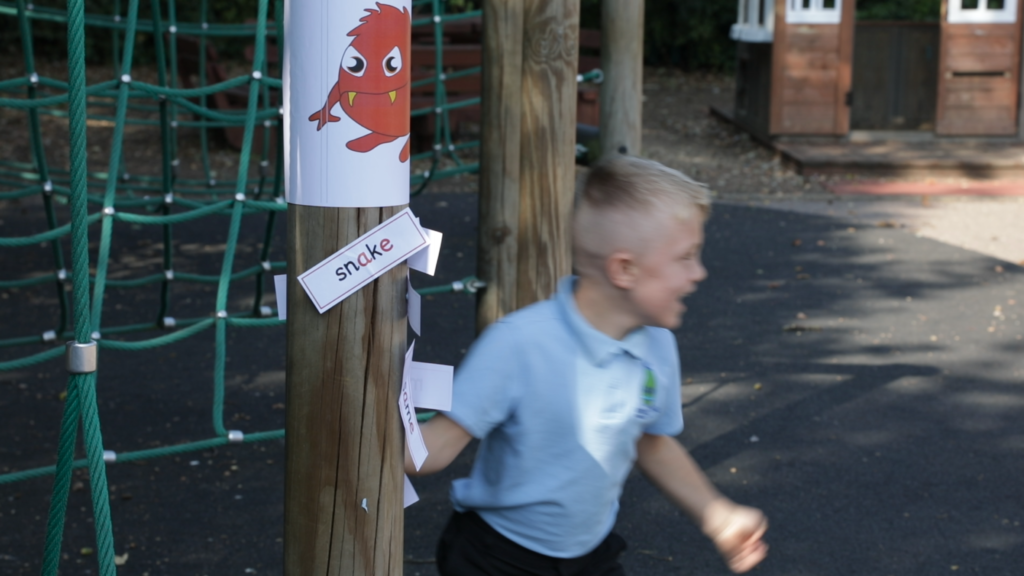We believe in active learning that engages each pupil.
Use the flashcards to play movement games to add a kinaesthetic element to your lessons. Here are some suggested Monster Phonics flashcard activities.
Word Treasure Hunt
Hide the cards around the classroom, hall or playground for pairs or groups of children to find. When a card is found, the player must read the card. Children take turns to record each word found, providing an additional opportunity for writing. The record could be created on paper, on a tablet, or on a whiteboard. Ideally record in colour-coded writing, although this is not always practical when writing on the move!
Snap
This is a variation of Word Treasure Hunt. Hide two sets of identical flashcards around the room. Children work in pairs to find the matching flashcards. A flashcard cannot be taken until its matching card has been found.
Bean Bag Throwing
Play in small groups. Place the flashcards spread out on the floor or in separate hoops distributed around the room. Have one or more bean bags available per group. The children take turns throwing the bean bag, aiming either for the flashcard or the hoop in which the flashcard sits. Once a flashcard target is hit, it must be read. After this, the flashcard can either be removed or left in the game depending on how you wish to play. Again recording the results adds spelling practice.
Vary this bean bag throwing game, by placing the flashcards in a ‘word ladder’ drawn on paper or the floor.
Whispering Reading Walk
The flashcards are distributed around the classroom/hall/playground floor. Children go on a ‘whispering reading walk’ in pairs. Once the flashcard is reached, the children read it very quietly.
Word Friends
Similar to Word Treasure Hunt, in small groups or pairs, children hunt for words. However, this time, they hunt for words that have a similar spelling. They collect the selected flashcards to create flashcard friends. Each group must be able to show the similarities in the words chosen. For example, any and many both have an a that sounds like an short e and end in a y that makes the long E sound. Mind, kind, find, behind might also be grouped together, or another, other, mother.
Silly Sentences
Hand out a random selection of flashcards to each child with the purpose of thinking of a silly sentence that contains those words. Who has the silliest sentence? Sentences also be written down.
Signs for Reading
Encourage reading around the school by using colour-coded flashcards. This will also inspire younger children to learn to read more complex high-frequency words earlier as colour-coding makes such words possible to read independently. Use the flashcards to make colour-coded signs to around the school or to label a display. For example, ‘this way to play’, or ‘please come in’. Ask the children to make signs themselves.
Use with the Magnetic Letters
Words on Monster Phonics flashcards have the same font and size as the Monster Phonics magnetic letters so that the two may be used together.
- Build words by match the magnetic letters to the word on the flashcards.
- Remove the letters and jumble.
- Ask the child to reorder the letters.
- Now ask them to close their eyes whilst you remove a letter. Can they guess which letter has been taken?
- Investigate which letters can be substituted or added to make new words. For example, substitute the ‘d’ with a ‘k’ to change ‘made’ to ‘make’. This reinforces knowledge of spelling patterns and word families.

